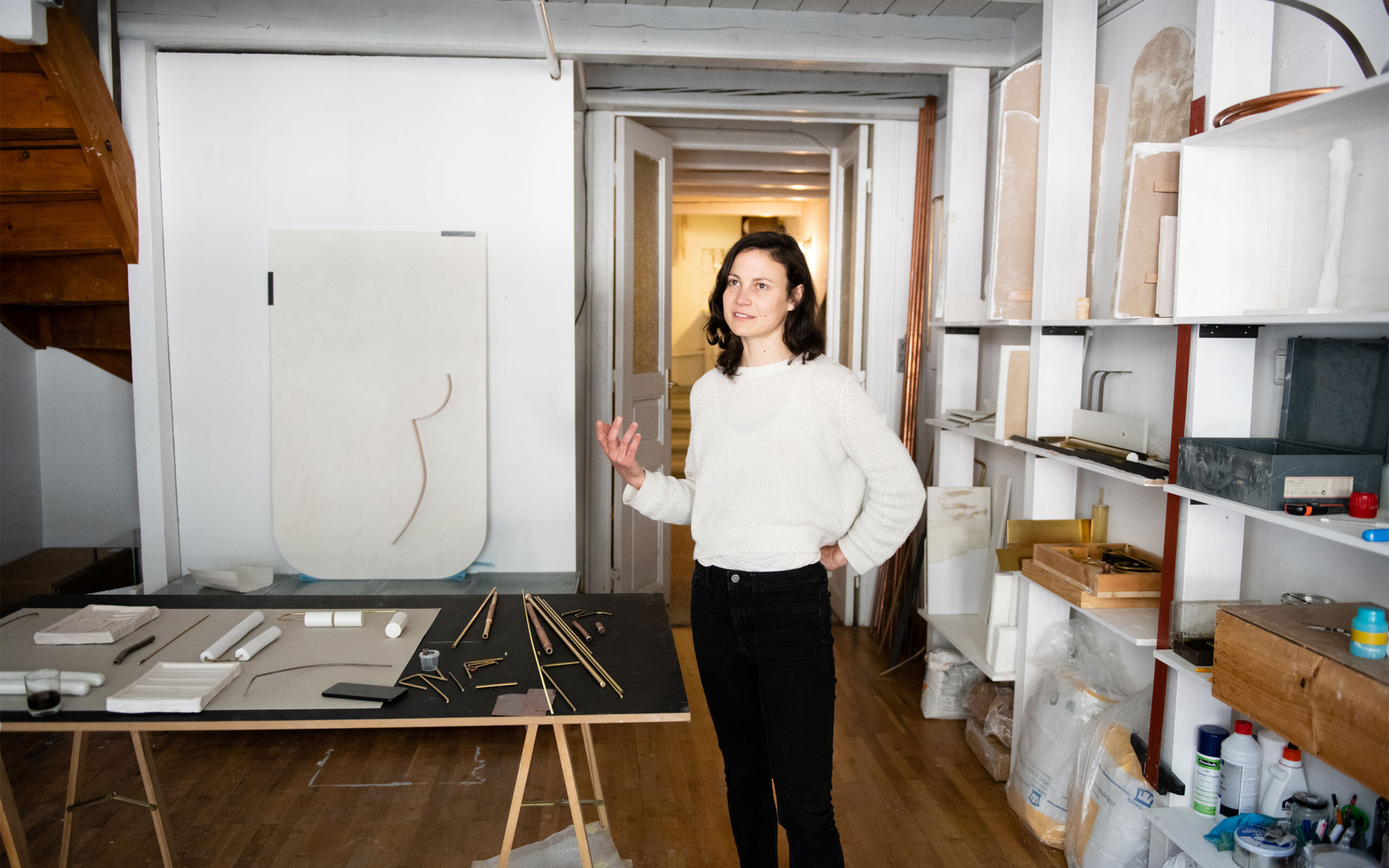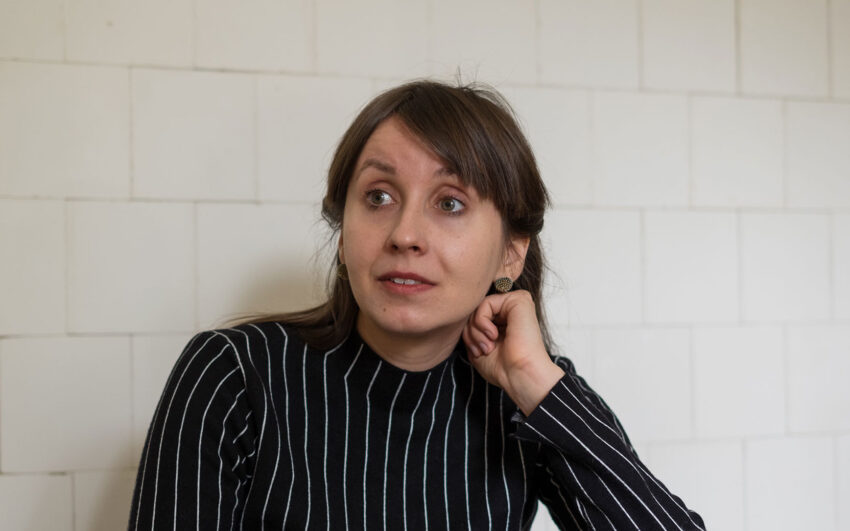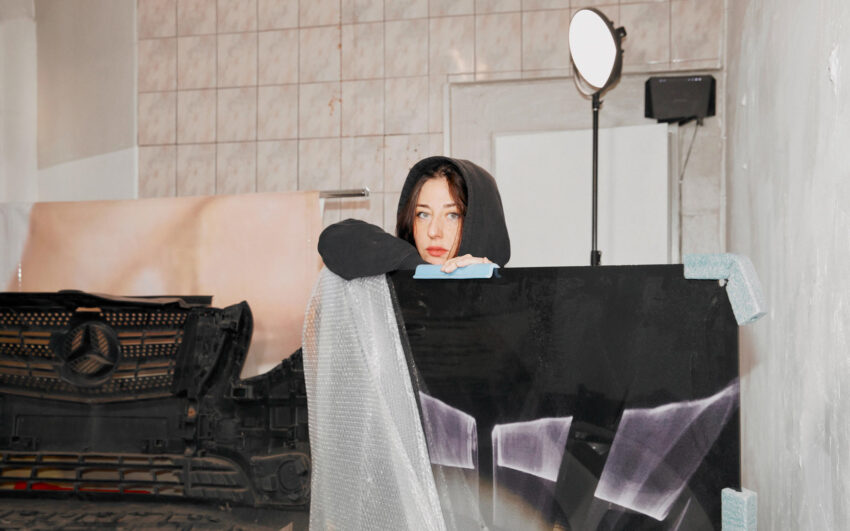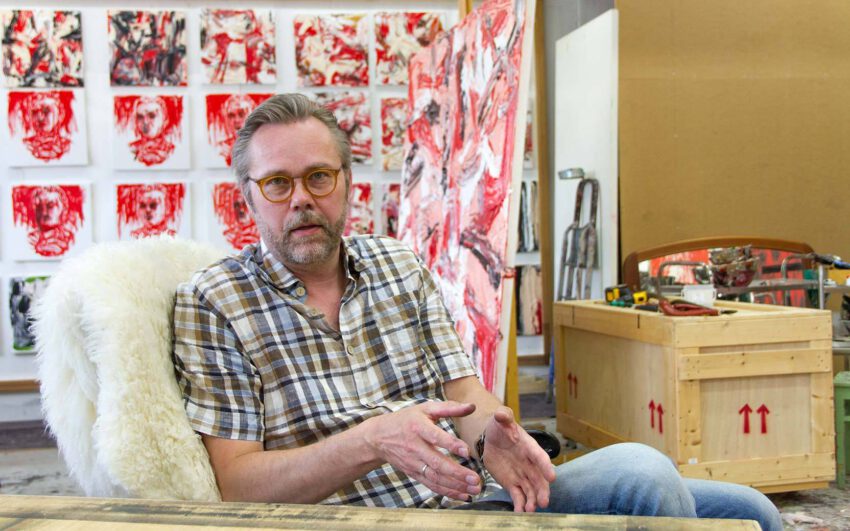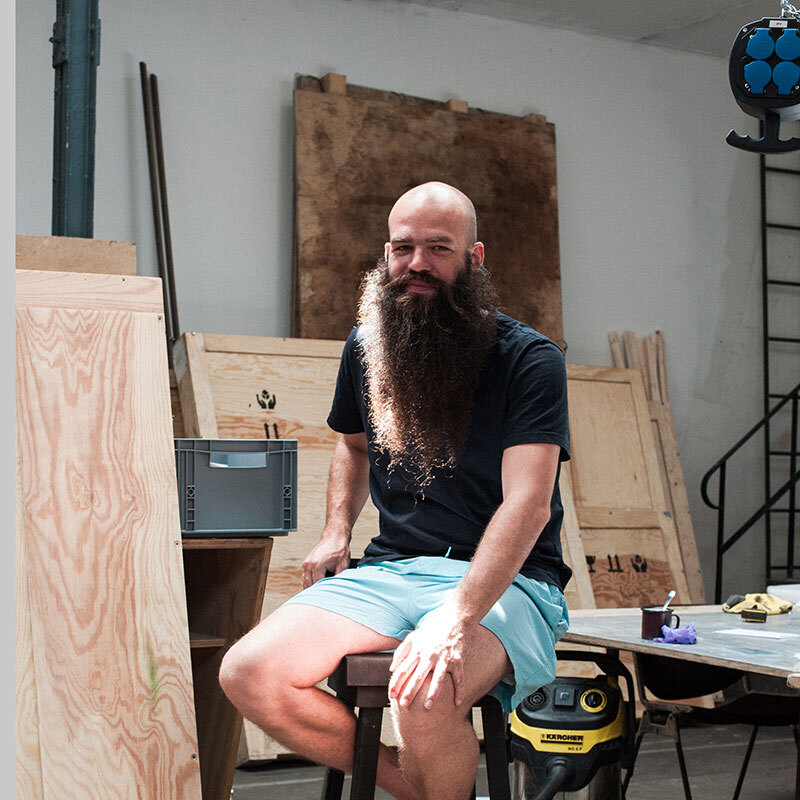Melanie Ender combines individual sculptural objects, often made of plaster or non-ferrous metal, to create installational works. For the artist, working with the materials is an intensive physical examination; she understands the composition of the sculptures and installations as a process that is constantly in motion. We talked with Melanie Ender about the fascination of synonyms and the question of when a work can be considered completed or indeed whether it can be completed.
Melanie, you began your training in the photography class of Gabriele Rothemann at the University of Applied Arts Vienna, and later continued to study with Dorit Margreiter. Is it fair to say that photography was the beginning of your artistic career?
I would understand Gabriele Rothemann’s class as a fine arts class, we could choose the media quite freely. And in truth, great care was taken there to use the right paper, which frame and which wood for the frame to be chosen – the focus was on conscious decisions about the materials, the reflection on the choice of materials in our work in general. I soon started doing things that were very body-space related, and then I quickly reached the limit with the photographic image. For me, photography was – in a way – the first means of expression, as a medium it was the start for me.
How did the development towards other media, towards an installational way of working, come about?
I find it quite difficult to describe the development from photography to my current work, as it was a long process. Step by step I have moved from one medium to the other and eventually I arrived at a point where it is all about the material. The physical reference was always very important to me. There is, however, a moment in my installational working method that might have a photographic aspect: perhaps when I call some of my works sculptural snapshots, that is sculptural fragments that I put together to form an installational image, but whose individual parts are not firmly connected, then it has something quite momentous.
If you think back one step further to your early youth, when did the desire to make art first appear and why?
Around the age of 17 or 18 art classes began to give me energy and strength in some way. That was the moment when I realized that this is a very good pool to draw from. It was the only direction that interested me, that would fulfill me, and I wanted those moments of irrefutable certainty to return again and again in waves. I felt it very strongly in the residencies (in Istanbul, Rome, und Turin). As soon as everything related to everyday life breaks away, I quickly realized that art needs a lot of space, and I want to give it that space in my life.
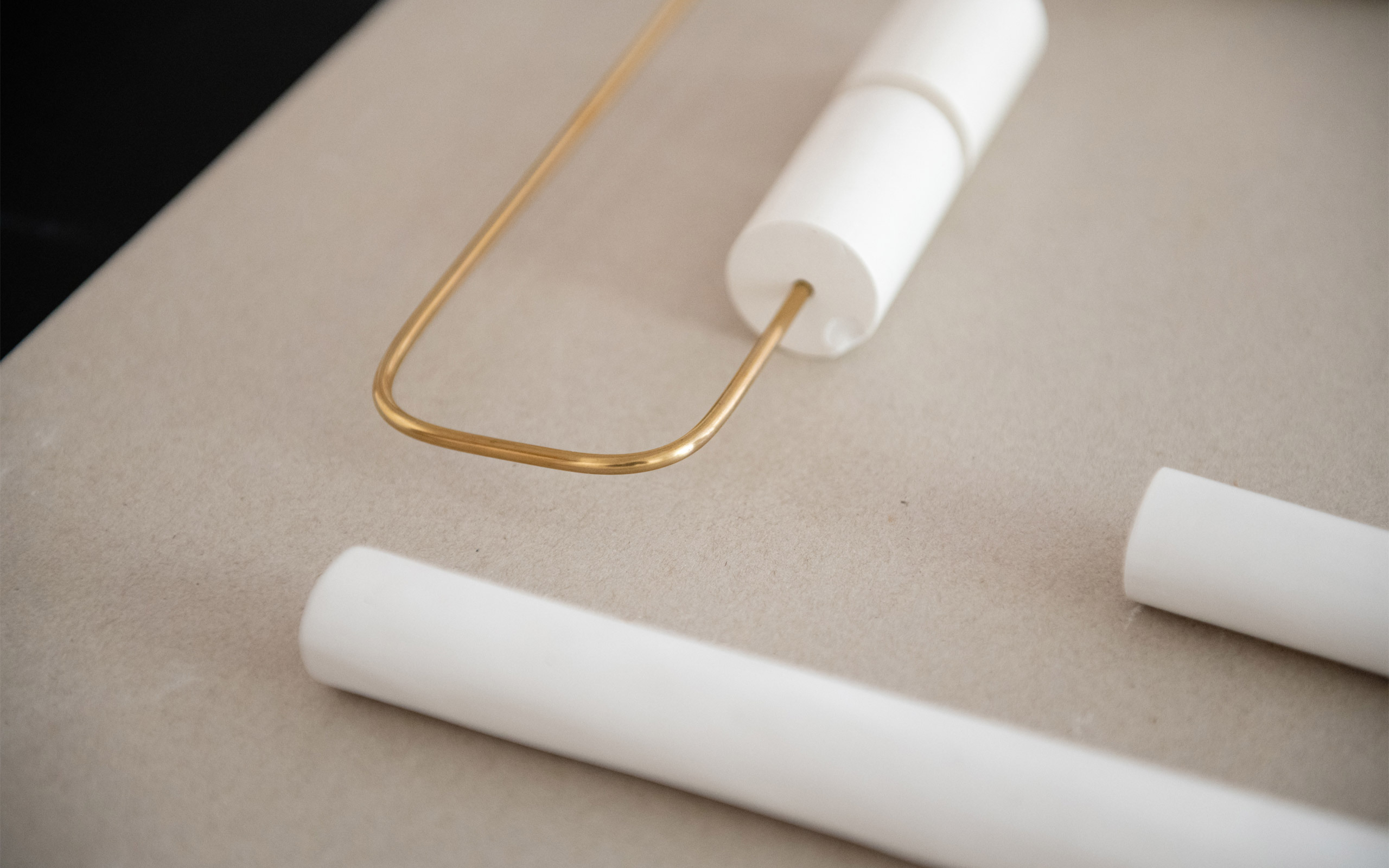
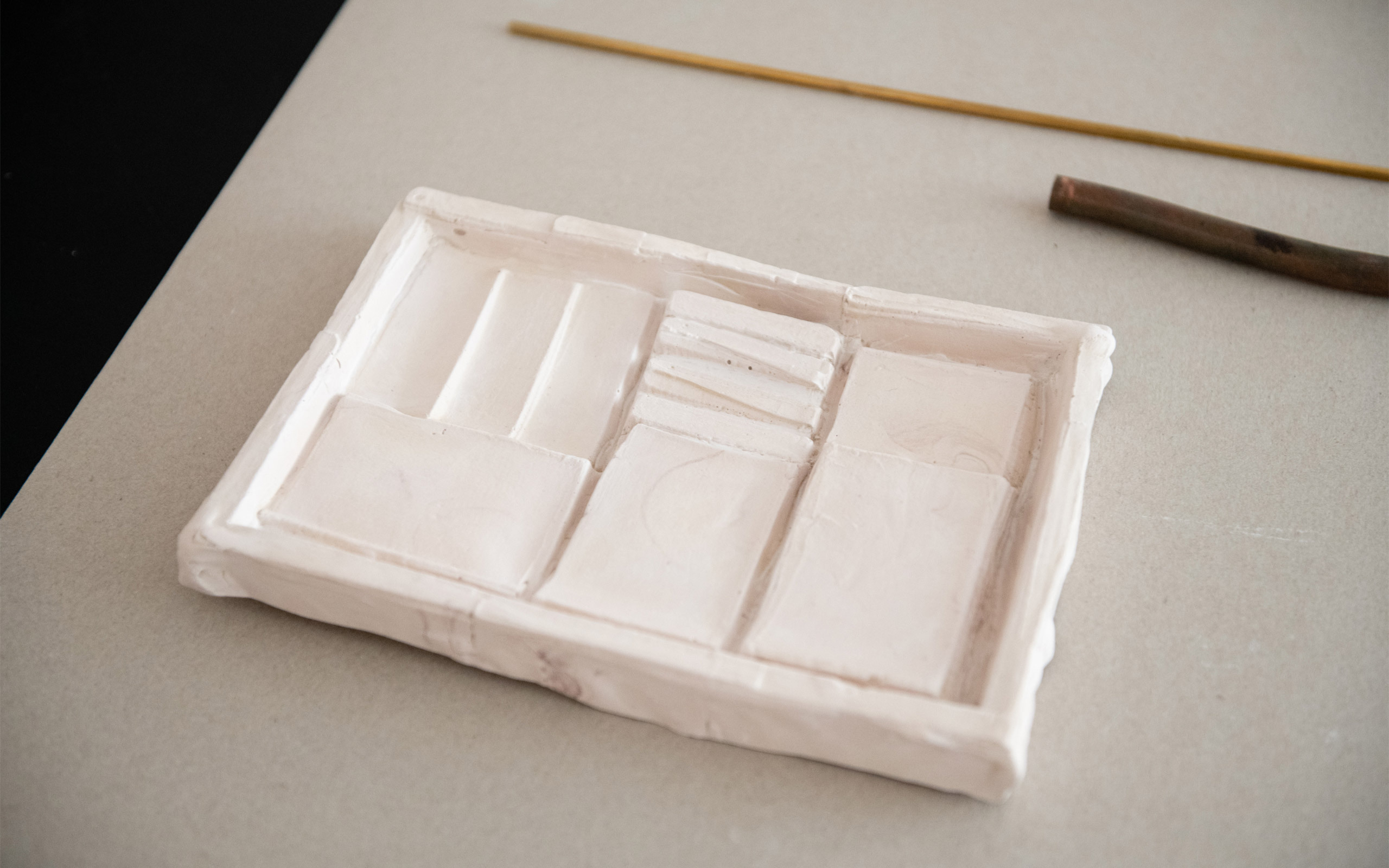
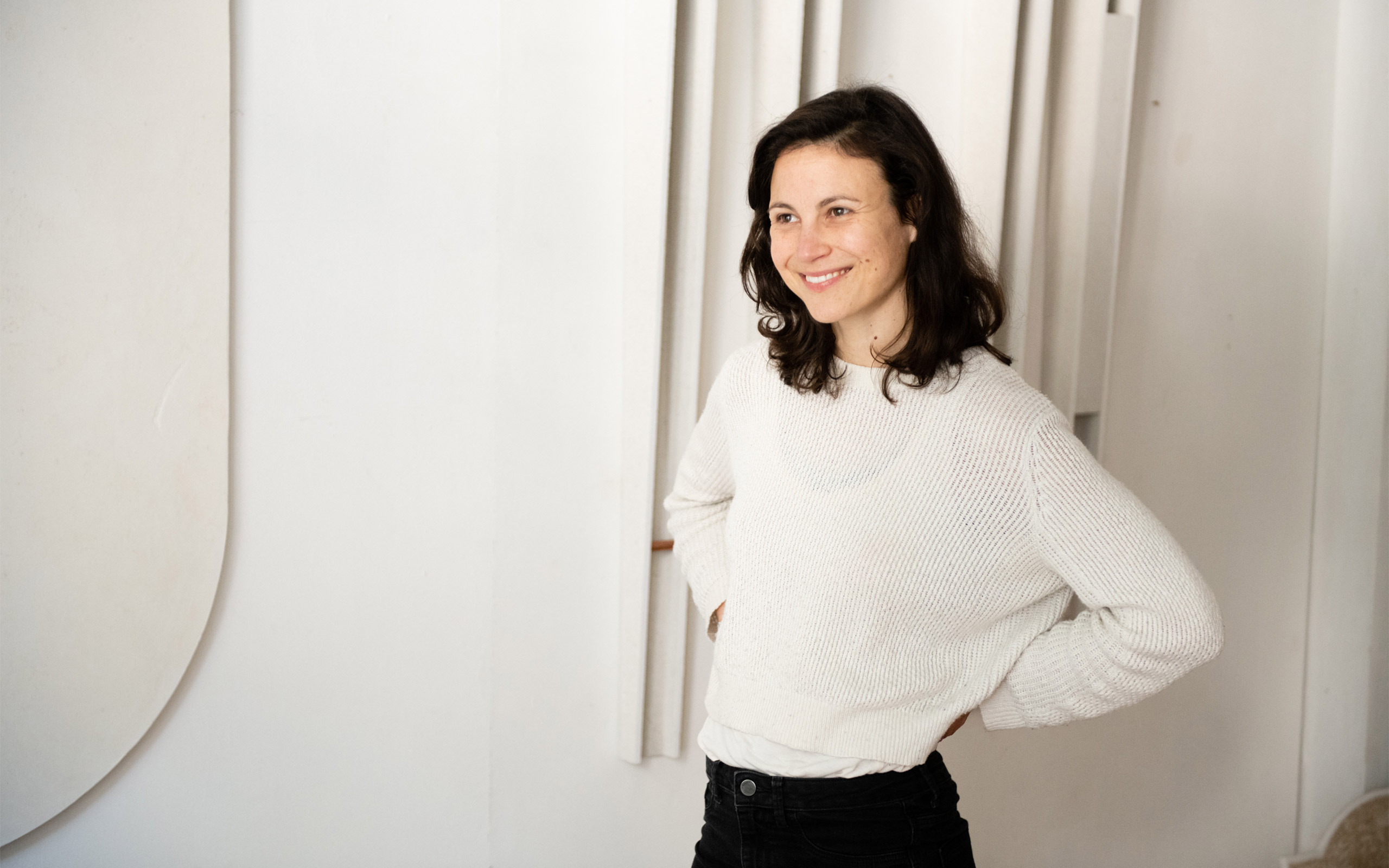
Is there an artist in art history, or perhaps among contemporary artists, who is particularly important to you?
In contemporary art there are certainly many people I find good and exciting. From art history, for example, I would name Eva Hesse and Louise Bourgeois, although their way of working has nothing to do directly with my own work process, but the uncompromising approach with which they pursued their work is fantastic. Their tenacity can be felt. Another artist who has been of great formal interest to me for some time now is Robert Ryman. His visualization of what are actually purely functional components such as screws, hooks, and brackets are an essential part of his very reduced pictorial compositions, which lend his painting a strongly object-like character. In addition, his works require a sensitive perception; you have to look very closely at his monochrome surfaces in mostly white tones, all of the small details are important.
In your installations you often work with plasterboard and metal elements, which are very delicate and evoke the association of line. The board could be interpreted as the image carrier. How strong is the actual connection to drawing in your objects?
There is no connection to drawing in the sense that there is a drawn template. Actually, I doodle a lot, but I'm more interested in gesture and rhythm. Although my sculptures often seem constructed, many things are created very intuitively. The curved brass objects especially, emerge as intuitively as drawings, except that the entire body is concerned with the line in space. This has something of a performative moment, which essentially neither penetrates to the outside world nor is it the content of the work, but is rather part of what I do.
Although the installations are basically three-dimensional drawings, they do not originate in drawing. For me, they have something to do with drawing in as much as there is a carrier material on which I place lines. It's about composition and the image itself, but it’s also about dissolving an image. There are frame elements, there is the carrier material, and there is the content. All these things are of equal significance; equal in the sense that nothing is in the foreground or background, everything is equally important in its materiality, so to speak.
Such an installational image consists of processed individual parts that already exist and are assembled in a set box.
Exactly. I sit here and work partly on very small things. All the materials that are worked on here are already sculptural objects for me, whether they are only bent, burnished, or polished, or already a concrete form, or a combination of two different materials. In a certain way, they are all individual parts, fragments, which I assemble to form a new whole. I spend a lot of time determining: At what point is one work actually enough, so to speak? And why do I consider it complete? Which part seems to fit into a larger whole and becomes part of an installational setting? Basically I work in a very processual way. All the pieces that lie around here, are potentially individual parts of a whole. These two plaster casts, for example, have been around for over a year and stubbornly or patiently, I’ve tried to incorporate them into settings, but nothing worked for me. And then I come to the point of saying: “Okay, perhaps they are complete as they are.” Only then does the form of presentation come back, which I deal with a lot: the things that are lying around in the studio are not finished paintings or sculptures after all. In the exhibition context, some settings are created from these individual parts, and the form of presentation usually involves a combination with another material. Eventually, the space as the ultimate carrier material also plays a role.
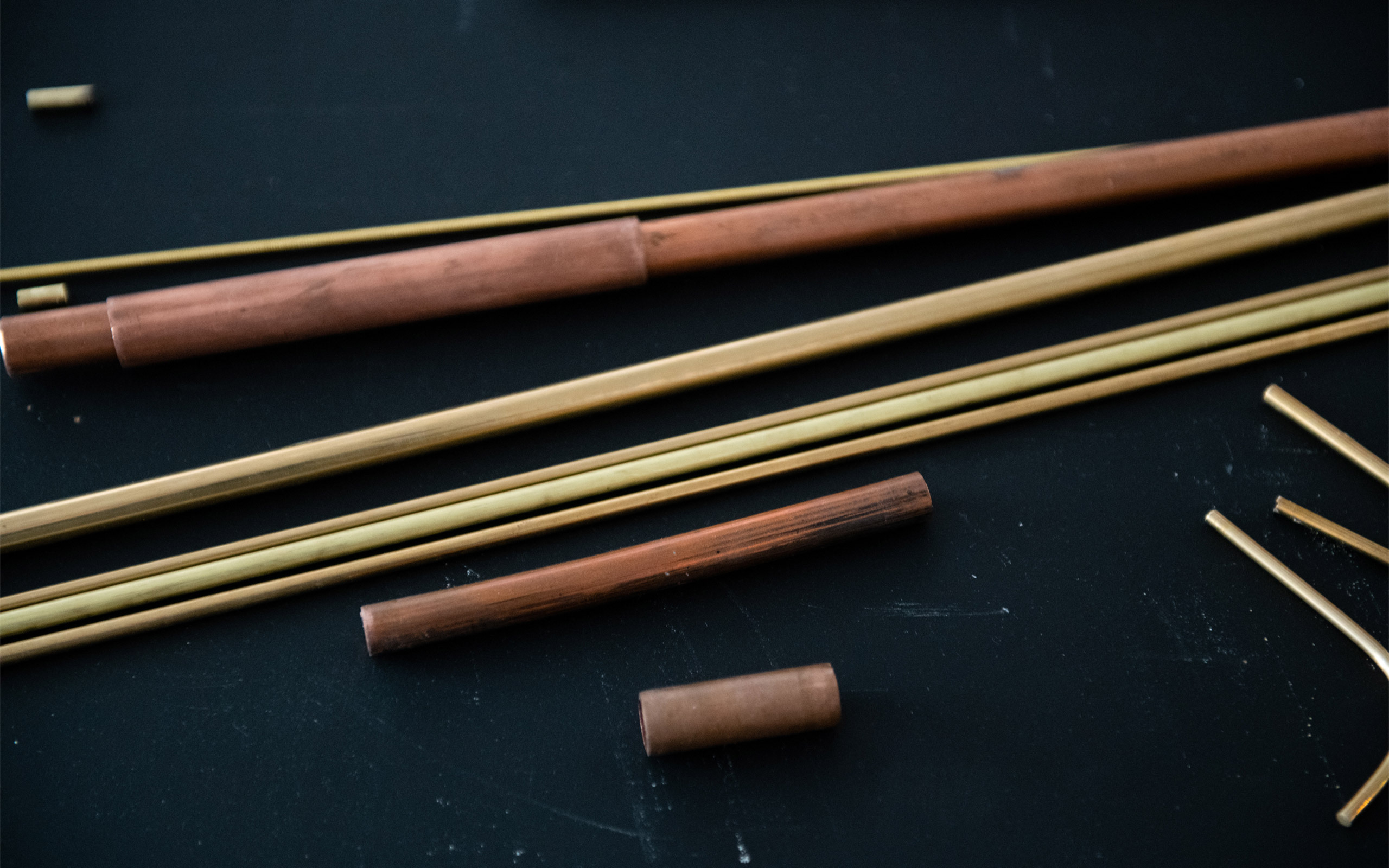
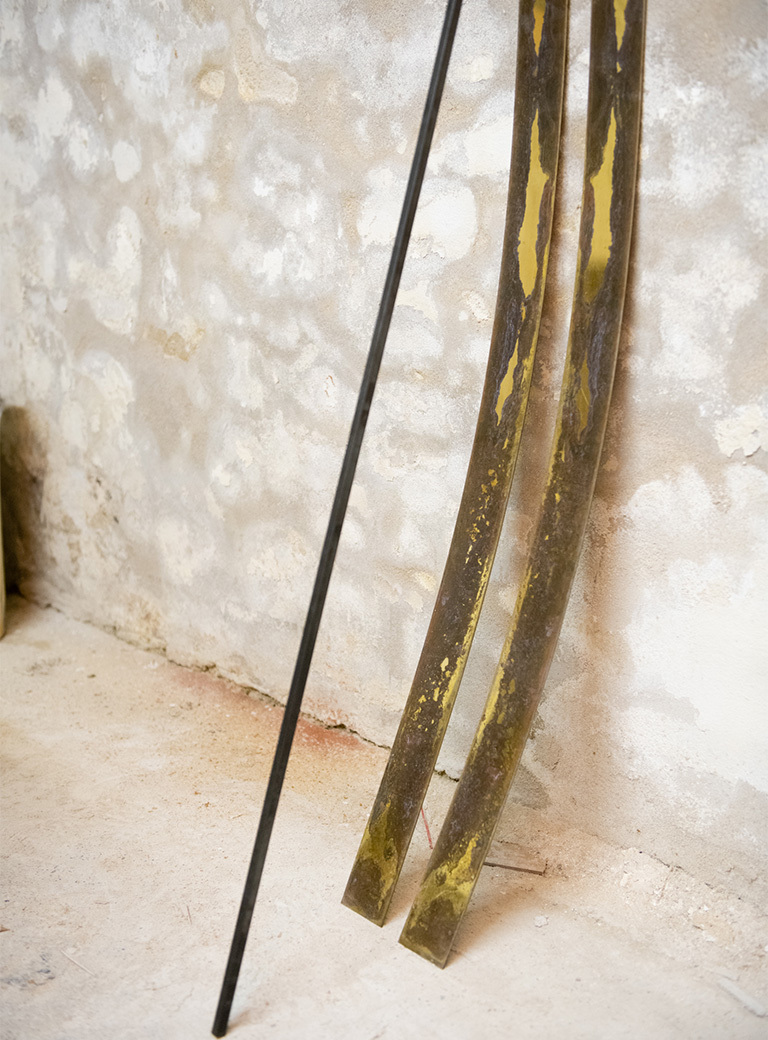
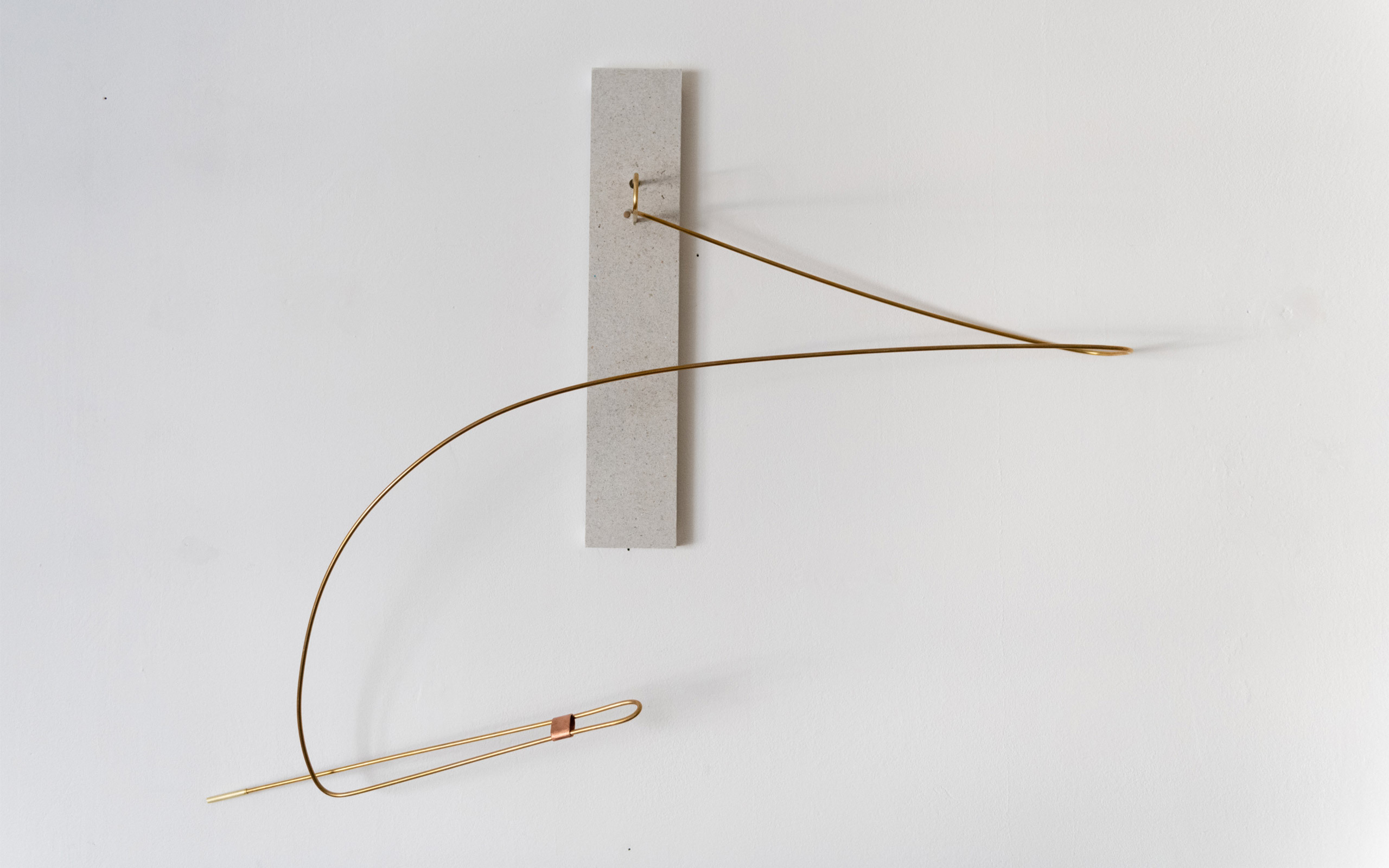
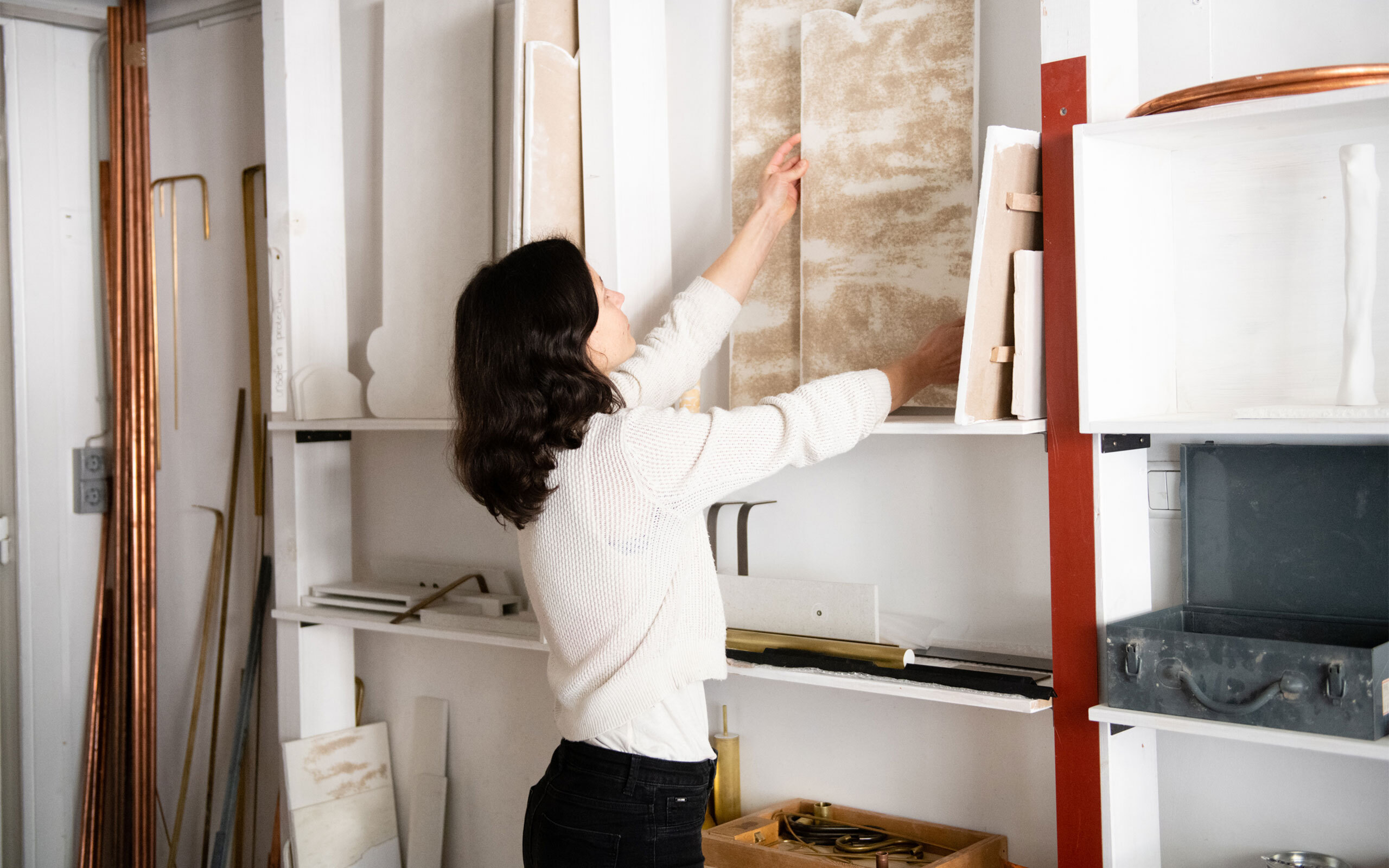
How do you arrive at the shape of these individual parts, and what inspires you to the forms?
The shapes are often bound to the properties of the material. I work mainly with two materials: on the one hand plaster and brass, or let's say non-ferrous metals, on the other. Both have in common that they can be worked incredibly well, even by hand. I don't need large machines or anything else, because brass and copper can be bent, heated, and shaped by hand. For me, an essential point of my work is that all forms materials relate to each other, to take my base material, plasterboard, as an example: I remove the layers of paper step by step until I reach and expose the plaster core. However, it is the paper layers that provide the plasterboard’s stability, when they are gone, the whole thing becomes very fragile and threatens to break. I then reapply layers of paper. This means that additive and subtractive processing methods are contained in the works. Subsequently, I use paper or cardboard as forming agents for plaster casts. In this way, one process determines the next and thus also the resulting forms.
For the production of the objects you get involved with the processual character. What about the haptic experience, the manual creation of the objects?
The removal of the paper layers with the sponge is an immense work each time, it takes an incredibly long time. I have tried a lot of things to make it go faster, but unfortunately without success. At the same time, I notice in my actions that during the working process something is happening to me until I arrive at this surface, until I have it in front of me
This pure surface – no, it is not pure, actually it is full of scratches, remnants of paper and traces of processing. In truth, you have to stand in front of this material to be able to grasp it sensually. This process is very exhausting for me in the sense that it is physically very arduous work.
On the other hand the work seems like a very meditative activity. What role do your text works play within the processes?
One could describe it that I lump these experiences, the material, my activity, and myself together in one pot and knead them into a poetic mass, so to speak. And in the process, something new is formed.
Especially when it's a very long process, I have a lot of time to think and to become aware of what is happening here, what I am doing, and how the material reacts. I actually reflect on the interaction between me and the materials.
To put it into words afterwards?
Not really. So actually not at all to describe it, but to let another level arise. The text production somehow additionally sharpens my sensitivity in relation to my work with the material.
When you try to write down a dream, it's not the dream you're describing, it's vague images of it. The dream always results in feelings, very vague things that are not concrete. And when you then write it down, a level is created that did not exist in the dream you experienced.
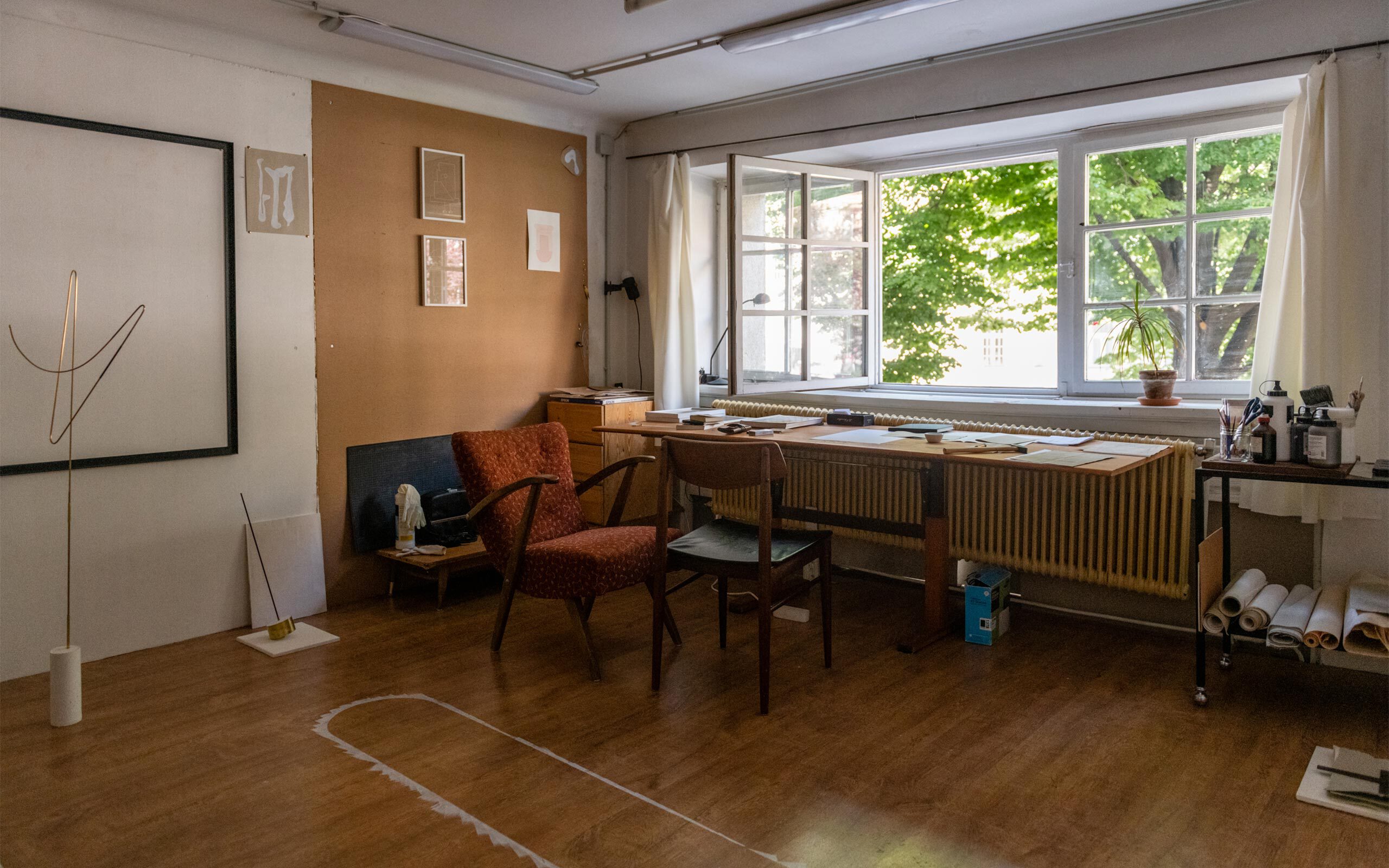
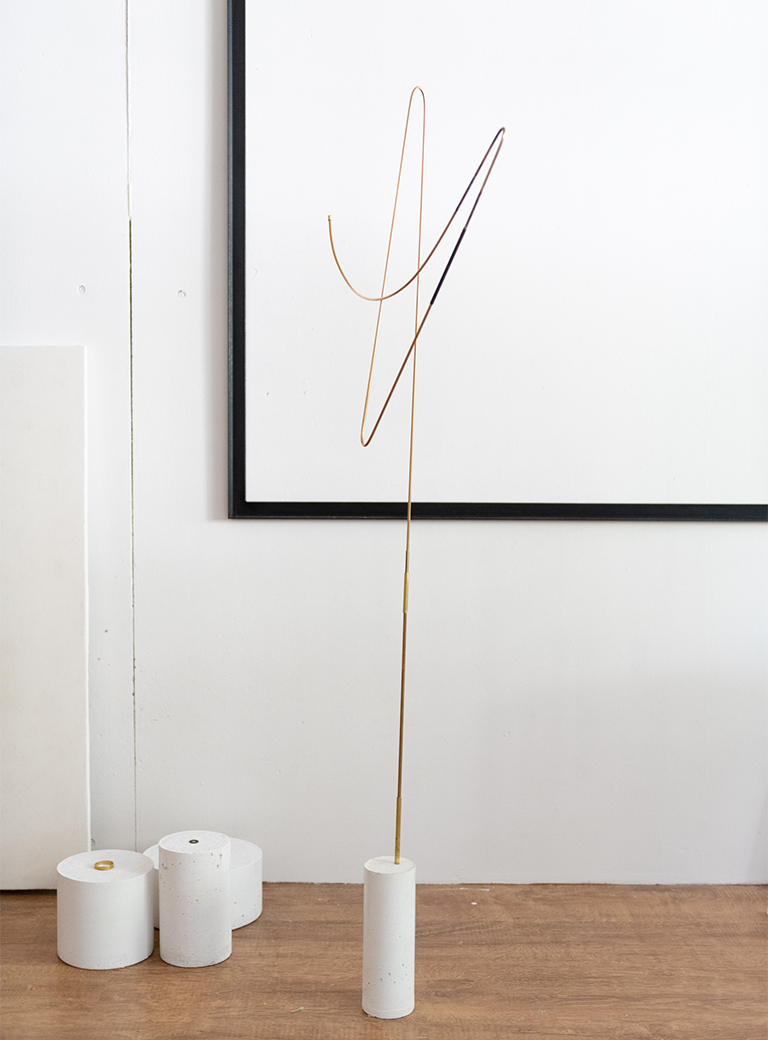
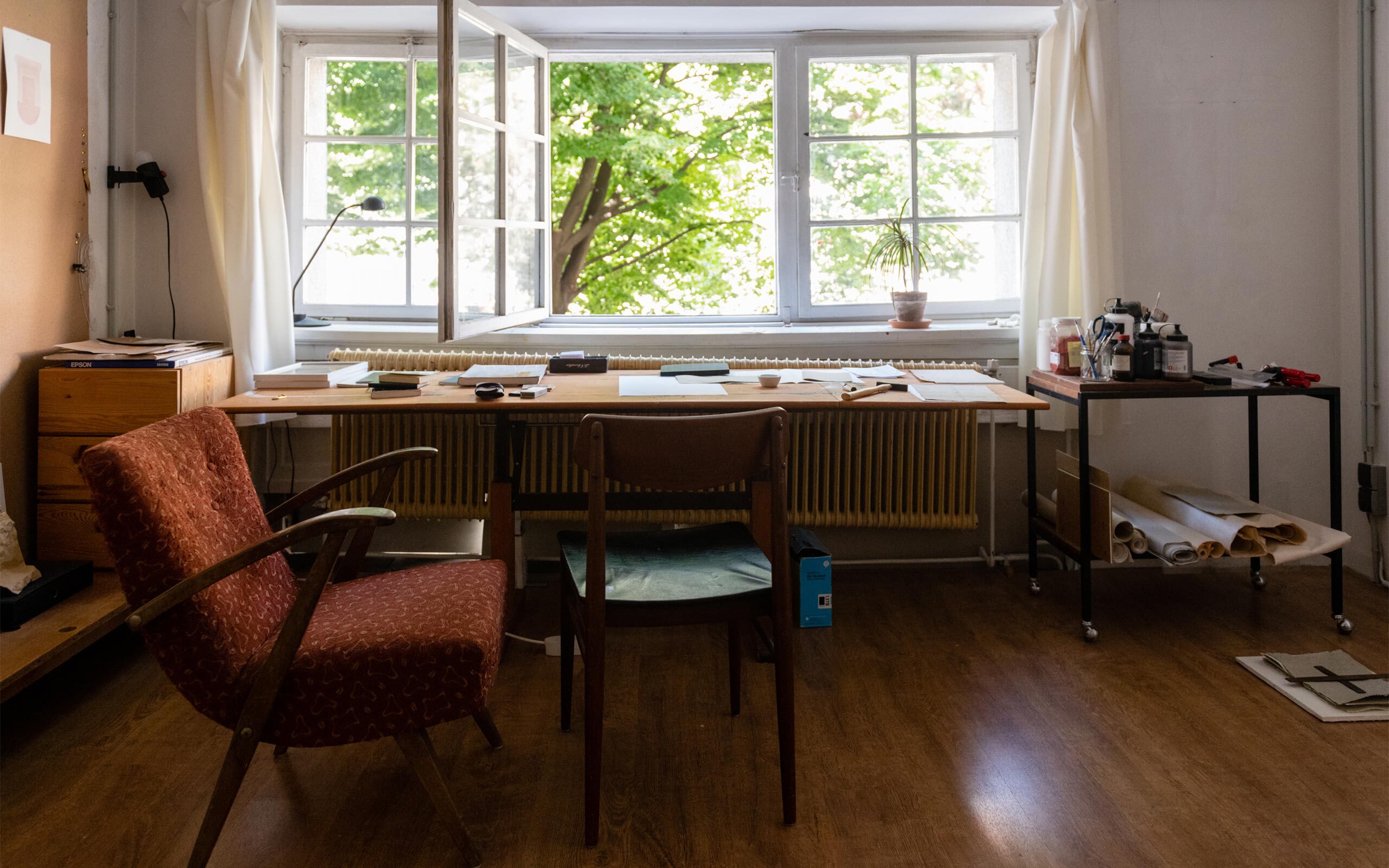
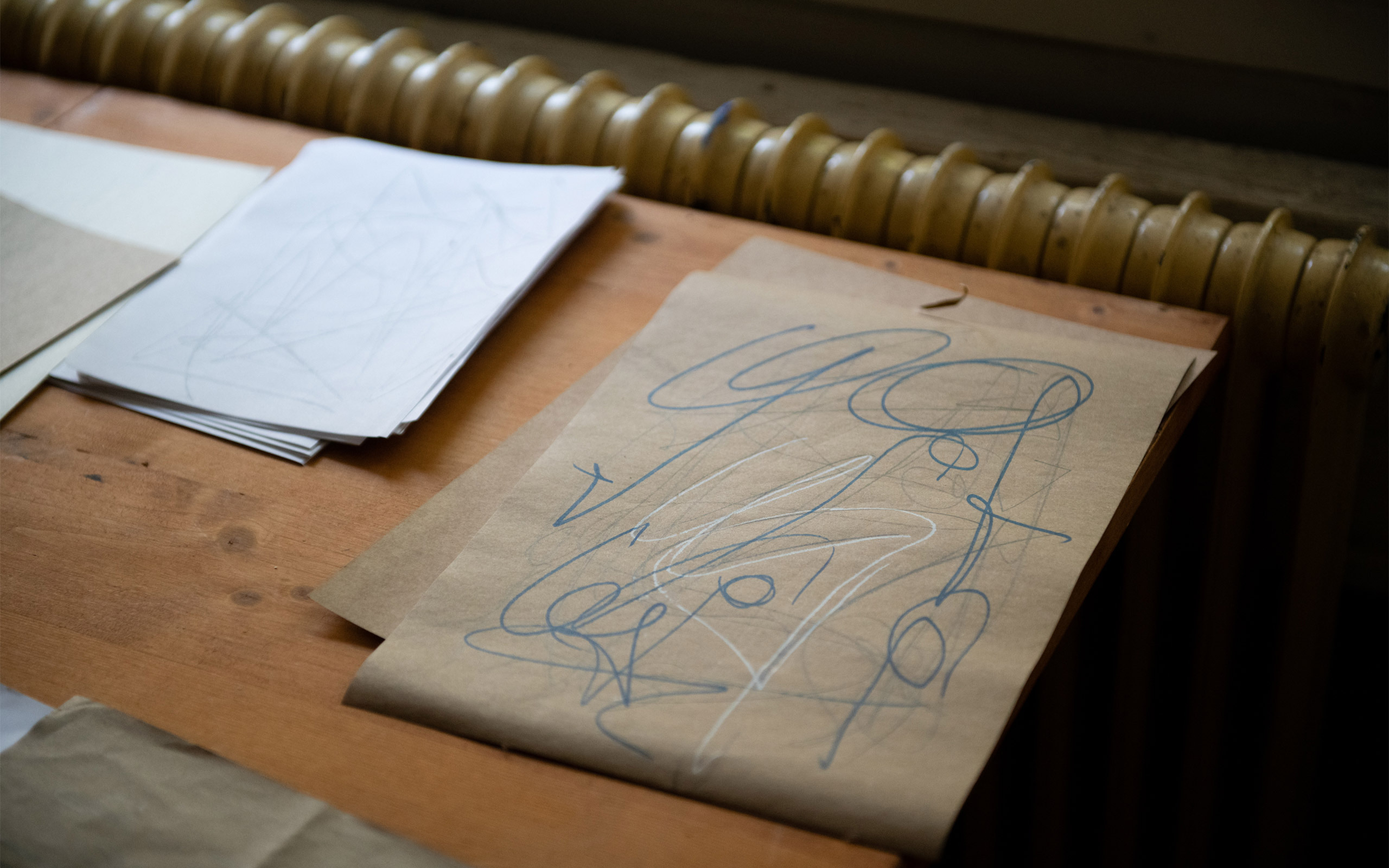
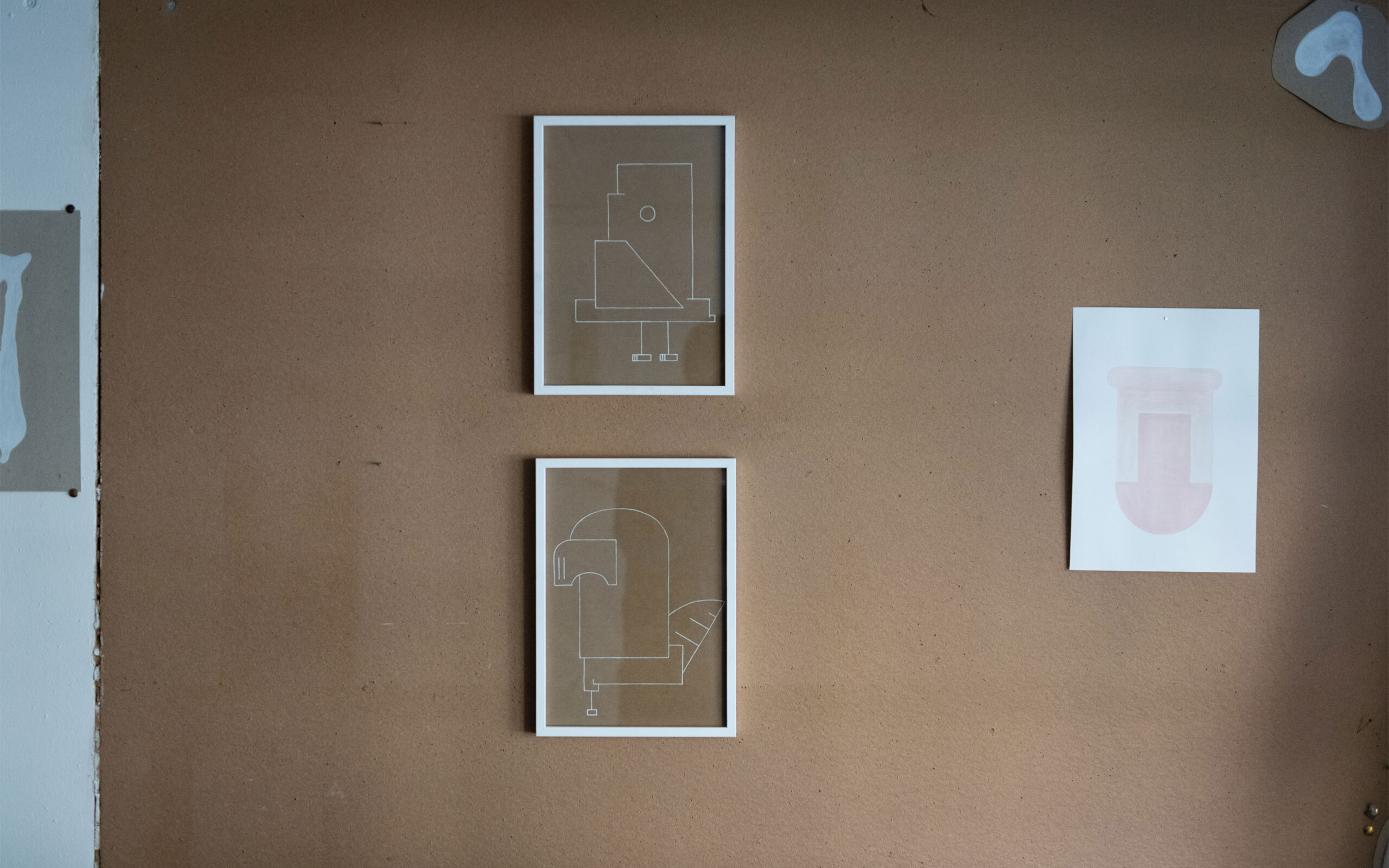
Your text work Shaping Stones, for example, could be interpreted in such a way that its content is not the reference to the material, but rather to a human body. This creates an erotic component.
It's somehow logical that this level of interpretation exists, because for me working with the material is such a sensually physical one. On the other hand, I look for words that open up another level in the text. That way it's not quite clear what's happening, but it opens up a lot more. In general I have a preference for synonyms. I find it fantastic that one and the same thing can have many different forms of expression. With every new synonym, another level of context opens up, which is slightly different, shifting a bit, and in this respect the text becomes very complex. And there are layers that can be placed on top of each other, and that makes the whole thing very open. Something of this idea, of the search for synonyms, occurs again and again in my works. Variations of an initial form, a basic form, which show slight shifts, transform a little bit and keep moving with it.
Have you been studying dance?
Yeah, when I did a lot of body-space-related video work. It was also about documenting movement notations for the camera, which of course all come from dance in some way, but not in the sense of an expressive dance. Still a fantastic work for me is Yvonne Rainer's Trio A, in which she translates the minimalism of the time into her dance. In my opinion it is extremely exciting what she has accomplished in this piece. It's also exciting that later she completely developed away from it again. The idea of a formal alphabet for the body interested me a lot for a while.
How would you summarize your working method in a few words?
There is this moment in my work, you could also call it an echo: a kind of permeability in which everything relates to each other and everything has something to do with everything. It's like breathing, the work remains open, so to speak. Putting things in a frame and closing them off formally and figuratively is basically the most contradictory thing I could do. That's why I work so fragmentarily with elements and individual parts, which are then further connected. This is my way of working – there are no themes I work on, but actually the act of constantly being in conversation with material and form.
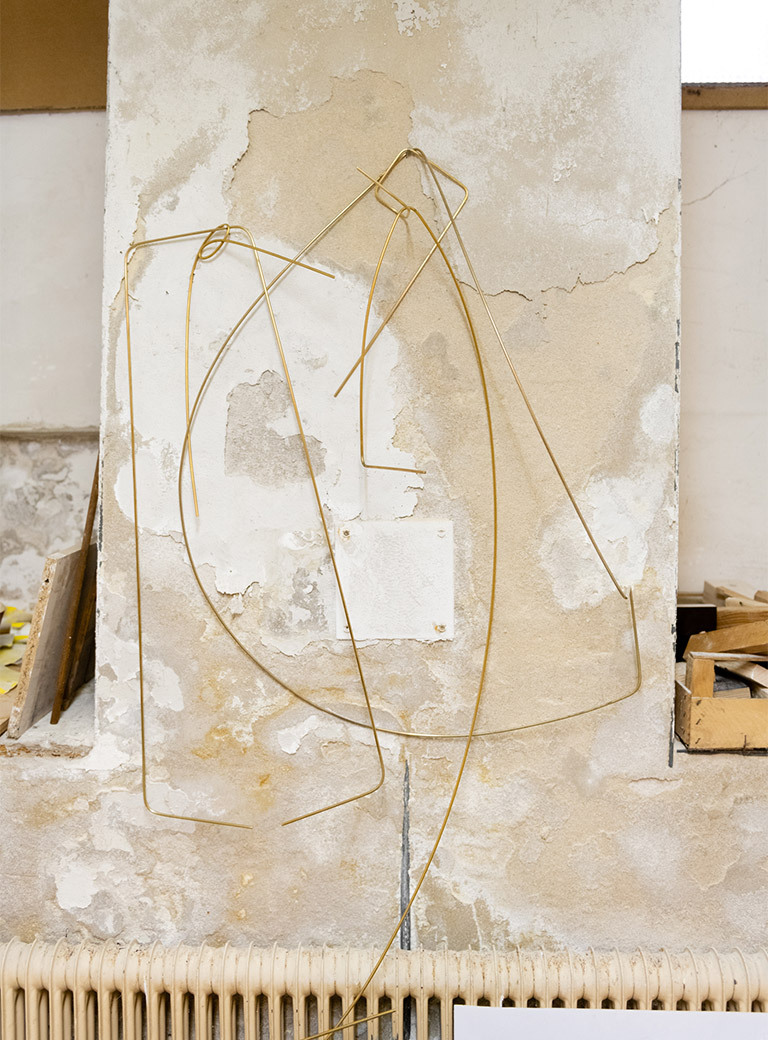
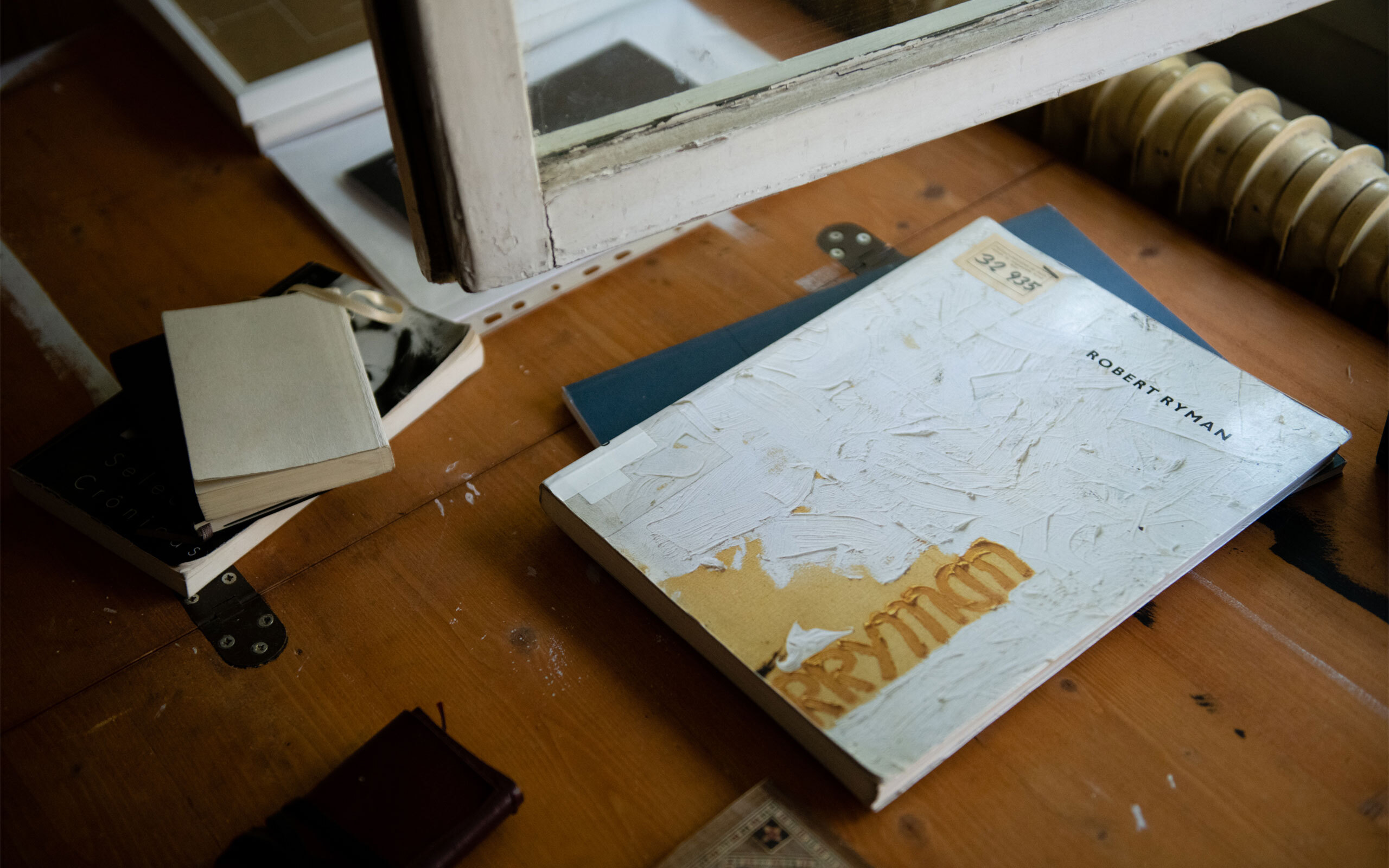
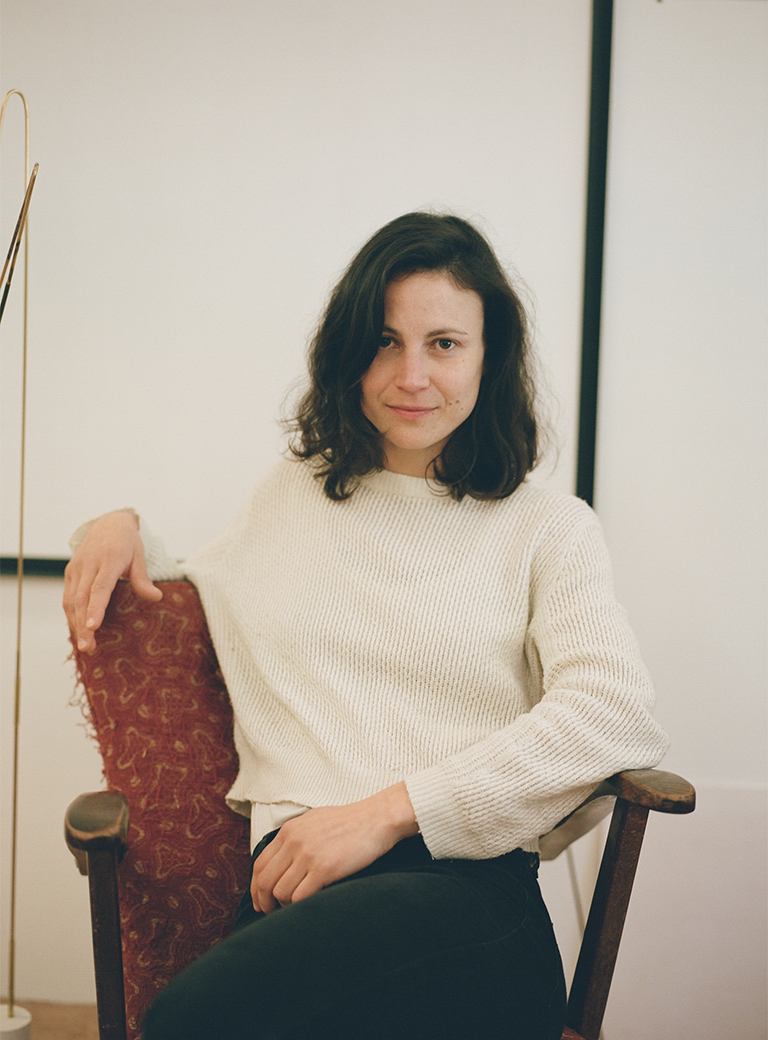
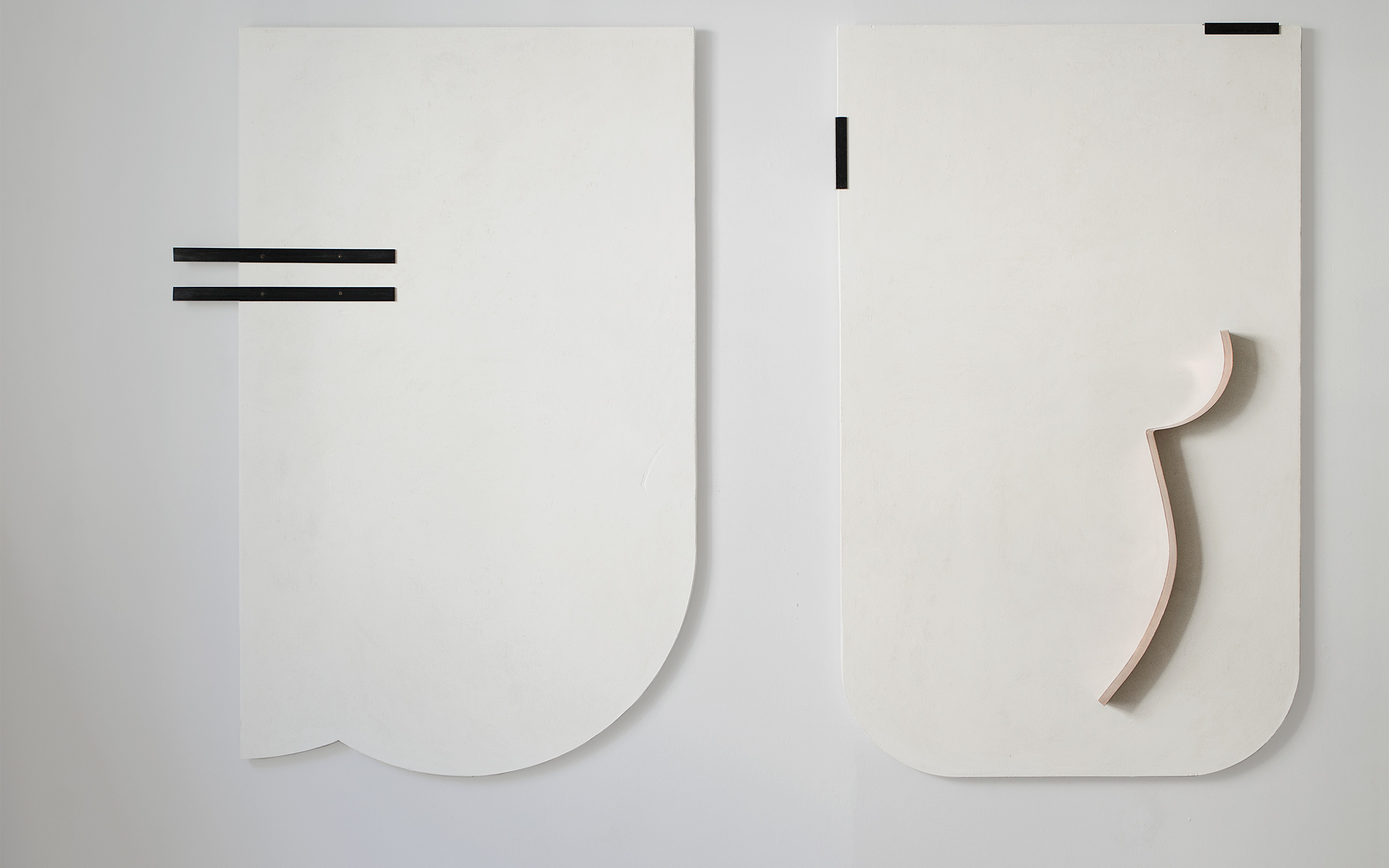
formulierungen, 2020
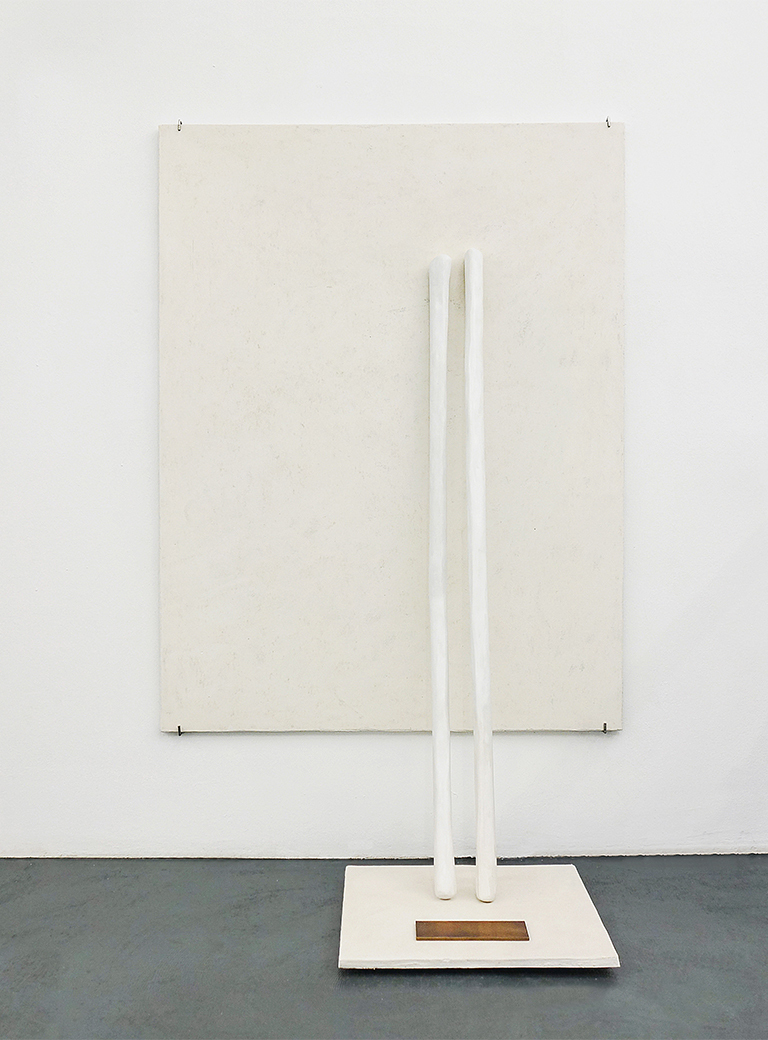
progressing bony process, exhibition view, to open closed forms, unttld contemporary, 2018
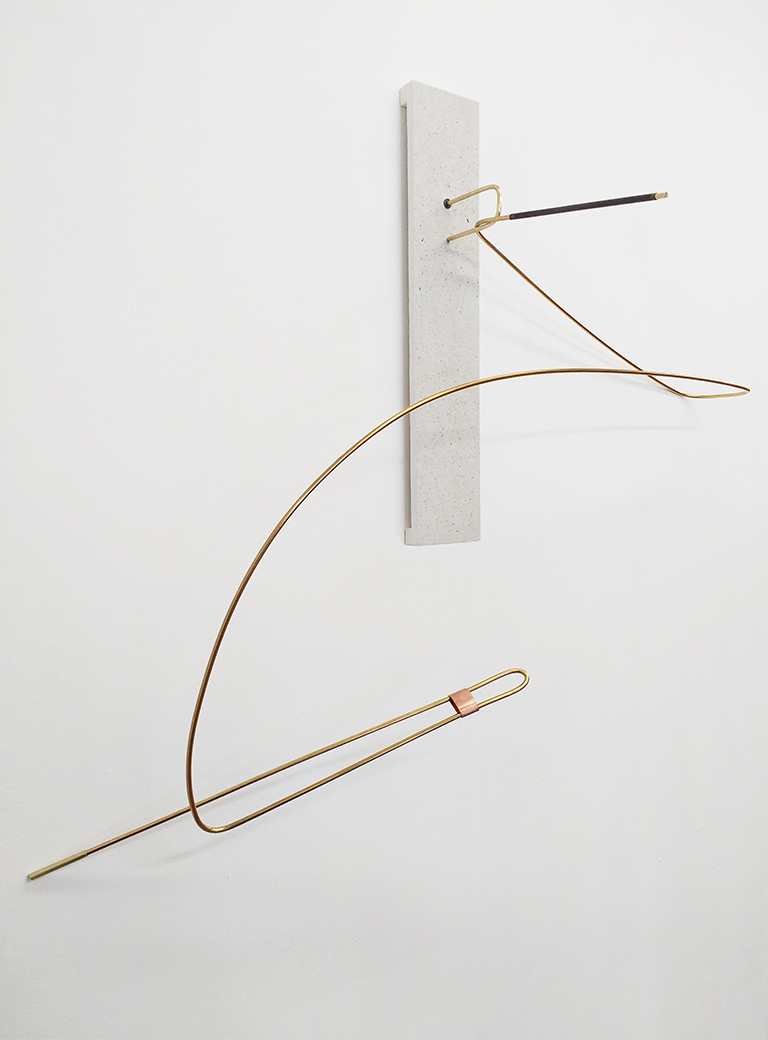
series of drawings CuZn II/I, 2019
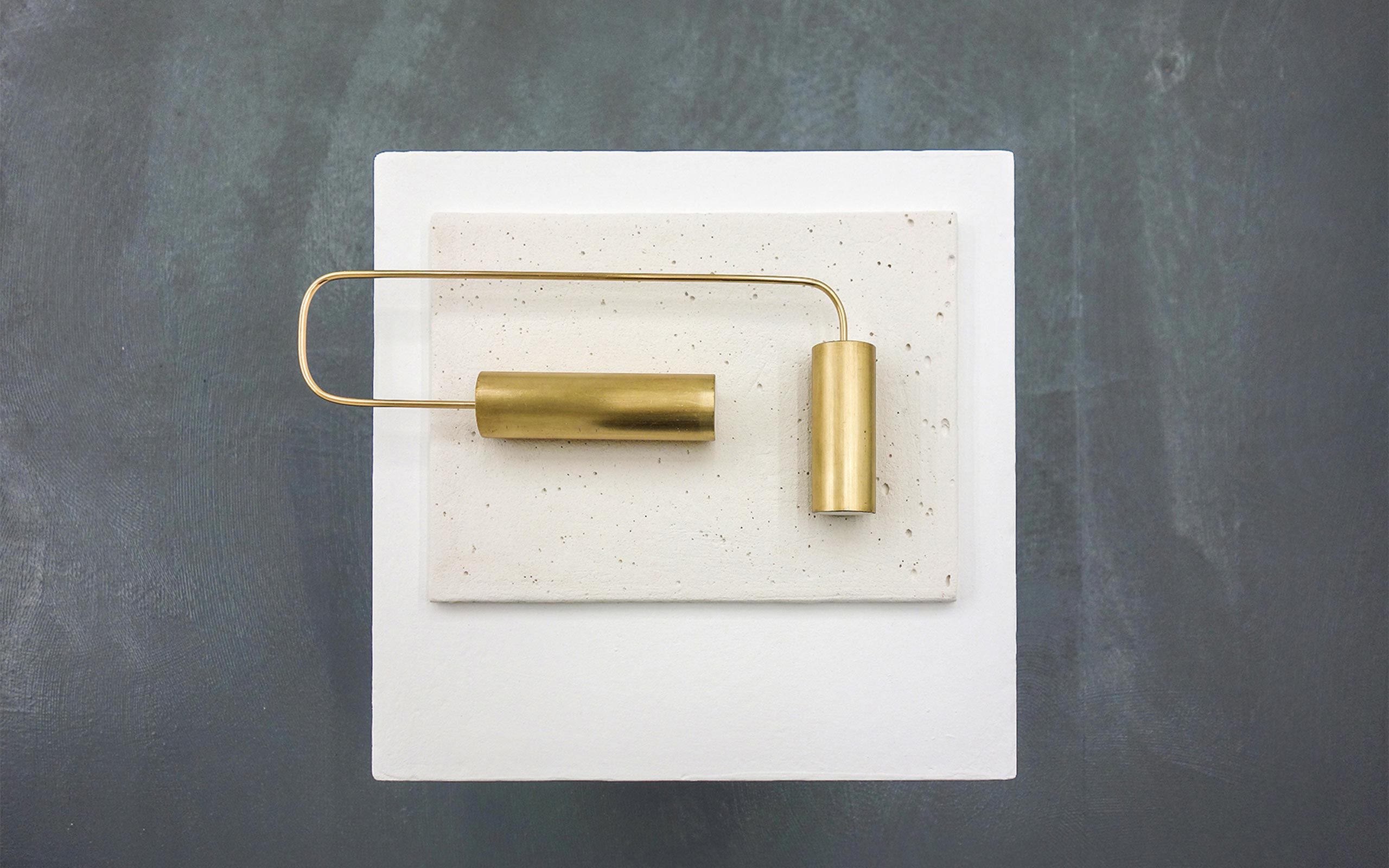
Supplies, Exhibition view, to open closed forms, unttld contemporary, 2018
Interview: Barbara Libert
Photos: Christoph Liebentritt


